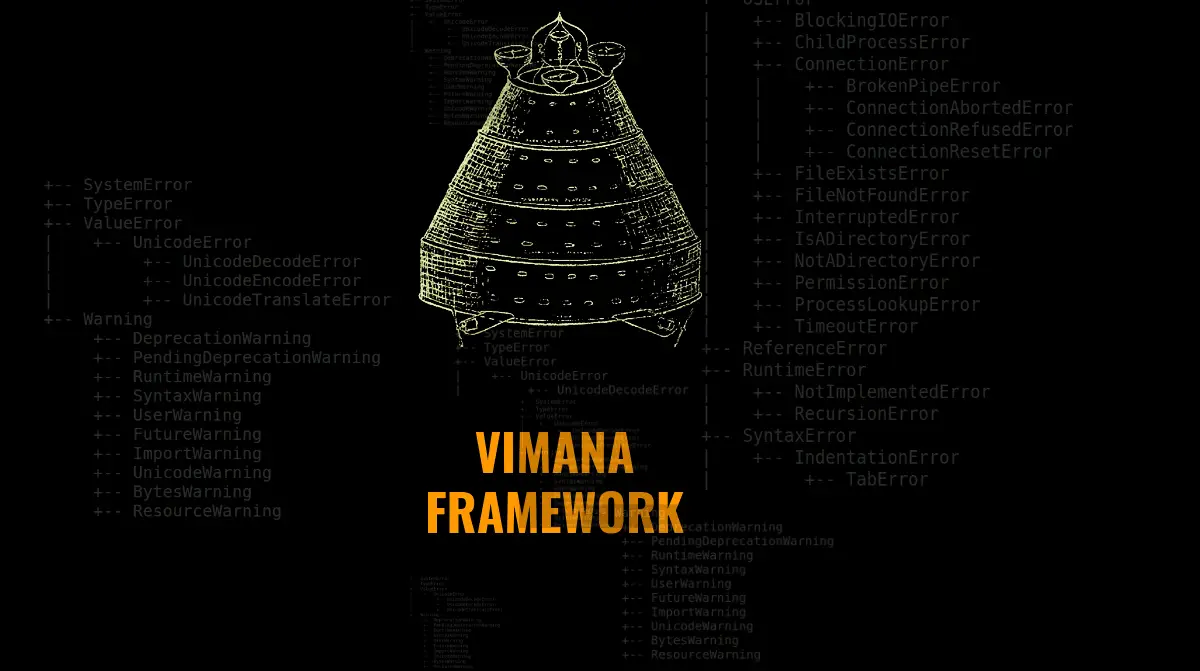
Vimana Framework
Vimana is a modular security framework designed to audit Python web applications.
Framework Structure
The base of Vimana is composed of crawlers focused on frameworks (in addition to the generic ones for web), trackers, discovery, fuzzer, parser among other types of modules. The main idea, from where the framework emerged, is to identify, through a blackbox approach, configuration flaws and inadequate and/or insufficient implementations that allow unhandled exceptions to be triggered. Depending on the framework settings (or specific libs even when not using frameworks, for example, raw wsgi) this can lead to leakage of sensitive and critical information that can allow to compromising the entire application, server, apis, databases, services, and any third party software with tokens, secrets or api keys in currently exposed environment variables.
Another important step performed by Vimana is to obtain and reconstruct the source code snippets of the affected modules (leaked by exceptions) that allow the discovery of hardcoded credentials, connection strings to databases, vulnerable libraries, in addition to allowing the analysis of the logic of the application of a mixed perspective between the black and whitebox approaches, since the initial analysis starts from a blind test, but ends up allowing access to code snippets.
Vimana is not
Vimana is not a vulnerability scanner, at least non-traditional, because it does not look directly for flaws like SQLi, XSS, XXE, RFI, and so on. Instead, the main focus of the framework, which is also its main feature, is to perform fuzzing to trigger exceptions and from there feed other modules that can perform other tasks from that initial input. However, when I spoke about the research that led to this tool, I showed that in some cases it was possible to identify traditional vulnerabilities (such as those in the OWASP Top 10) by analyzing an exception that was triggered. So, there are already plans for a siddhi to identify these vulnerabilities, however, it is important to keep in mind that vimana is not intended to be a tool to exploit a possible sqli injection, for this it has sqlmap and several others.
There are certain parts where scope definitions are made (against which a particular module will be executed), where basic tests are made to check the state of the port informed as an argument on the command line. However, it is also important to note that this tool is not intended to be a port and service scanner, for this there is nmap and others.
And so on, what this framework is I don’t know yet, it’s early, but I can already point out some things that it is not and does not intend to be.
Install & Use
Copyright (C) 2020 s4dhul4bs